

Back to overview

Scroll
down

An important part of our commitment to sustainable development is protecting people’s mental and physical wellbeing – within Stahl and in our supply chain. Read this section to find out how we ensure the safety of employees and contractors through training, policy and certification, drive a culture of inclusion and diversity at Stahl, and ensure fair and equitable labor practices in the supply chain.
Alexis Pey
Global SHE & Process Safety Manager
“ Safety is a top priority for us, and a safety-first culture develops from within. We learned more about what Stahl employees think about safety in our 2021 survey, and we continue to ensure their views help shape our approaches. ”

Keeping people safe and well
As part of the chemical industry, the occupational health and safety risks Stahl faces include chemical contact or exposure to hazardous substances for health, chronic (serious) illness linked to chemical exposure, slip, trip and fall, and fatal and serious incidents.

ESG roadmap to 2030
Goal: Maintain a safe working environment for all Stahl employees and contractors, with a goal of zero accidents.
2030: Zero accidents
A true safety culture is a mindset that prevails inside and outside the workplace
- A good safety record is never achieved through a large effort by a small group of people, but by many small efforts from a large group of people
- The potential consequences of injuries at work mostly affect people and their social network outside work
- Stahl’s zero-tolerance policy on unsafe behavior ensures people are not injured at work
R20 aims to embed safety into every layer of the business through engagement and awareness. In 2021, we carried out a safety survey among employees - called the Organizational Cultural Diagnostic – for all employees across Stahl’s sites and offices worldwide. The response rate of 97% reflects the importance of this topic to employees.
Our ambition is to create a true safety culture, with a target of zero accidents and incidents. To achieve this, we developed the Road to Zero (R20) program, which focuses on integrating safety into our company culture and ensuring that it is a shared responsibility for the wellbeing of our people.
Pillars of the R20 program:
Survey feedback
on the areas of strength and improvement
Safety related communication: despite the good teamwork and family feeling, safety is not a common topic when communicating with colleagues.
Safety perception as a fundamental and top priority is not consistent at group level. Safety may be perceived as a responsibility not linked to some job positions.
Improvement
At all sites, people help and support each other creating a “family-like” environment.
At local operational locations, employees are mindful of safety and are encouraged to report any safety issues.
Frontline employees have a good relationship with their supervisors and work very closely together.
At many sites, employees appreciate the effort made by management for safety culture and value the support they get from the company.
STRENGTH
Monitoring our safety results
Stahl reports safety KPIs internally and to our shareholders on a monthly basis, including injuries, incidents, audits, training, engineering projects and other prevention methods.
In 2021, the rate of accidents and injuries increased, resulting in an increase in the total recorded injuries (TRI) frequency rate, lost-time injury (LTI) frequency rate and severity rate.
Data verified and validated by Deloitte
TRI = The total recorded injuries frequency rate is calculated as number of total recorded number of injuries in the last twelve months over total number of worked hours and referenced to a base of 1,000,000 h.
LTI = The lost-time injury frequency rate is the number of accidents involving the loss of one or more days of working time in the last twelve months over total number of worked hours and referenced to a base of 1,000,000 h.
The severity rate is the number of lost working days due to injuries in the last twelve months over total number of worked hours and referenced to a base of 1,000 h.

Improving employee safety through policy and training
We are working to reduce these injury and accident rates towards our goal of zero by 2030, including through policies. Our policies apply to all people working at Stahl, including temporary staff. Our focus on safety extends to our customers and the communities around our factories.
Stahl’s Safety, Health and Environment policy
a strong safety culture involving the whole organization
safety, health and environment as the top priority
safety is more important than a short-term result
implementing best industrial practices in addition to compliance to all legal requirements
knowledge as the basis of all decisions. Stahl will require that employees are trained in the skills necessary to carry out their duties and make decisions ensuring safety
Our Global SHE & Process Safety Manager sets our SHE strategy, standards and policies, implements them throughout the company and ensures we follow them. Through local work councils, our employees are consulted on the SHE policy developments and evaluation.
Our Safety, Health and Environment (SHE) policy focuses on building a strong safety culture across the organization, with an emphasis on implementing industrial best practices as well as complying with all legal requirements.
The key principles of Stahl’s Safety and Health policy:
Risk assessment
The Stahl Hazard Identification and Risk Assessment Methodology (SHIRAM) is our standard methodology for safety risk assessment. This methodology was designed to fit Stahl’s operations and processes, and to integrate best practices for risk assessment and management. If our employees observe any additional hazardous conditions or behavior, they are obliged to report this as part of our safety culture. If incidents do occur, all Stahl sites are required to provide an investigation report. The methodologies for this are established at the local site level.
SHIRAM is implemented in a new platform – the ARA Platform – which replaced the previous Stature Platform in 2021. We manage all studies through this platform, so we can easily share information between sites. We will continue and intensify this development in 2022, introducing new templates and services and providing a clear reference within the digitalization landscape of Stahl.
Training
We require all employees to be trained in appropriate safety skills, with the understanding that safety is a mindset, not a department, and that everyone at Stahl is responsible for ensuring it. Every site has a training matrix that defines the knowledge required to perform each job. Operators working in production, and colleagues in labs, logistics, centers of excellence and offices are trained based on the type of work they do and the risks involved in their work.
Certification
We demonstrate our continuous improvements in safety also through ISO certification. In the ESG Roadmap, we included the target to have all Stahl manufacturing sites ISO 45001 certified. ISO 45001 replaces the previous standard, OHSAS 18001. One of the biggest changes is in leadership and management commitment: it takes a proactive approach that requires hazard risks to be evaluated and remedied before they cause accidents and injuries, while OHSAS 18001 takes a reactive approach that focuses solely on risks and not solutions. We have updated our approach in line with this change, to be more proactive.
Safety is also part of audits carried out by local authorities (as a condition of issuing permits).
Customer health and safety
Our commitment to eliminating restricted substances in the value chain (see the section on product safety in the environmental chapter) reflects our broader commitment to customer health and safety.
Our Stahl Campus® training modules are part of this. In 2021, 2,000 participants from 150 different organizations joined us in our interactive Campus trainings and lab sessions. We believe that by sharing knowledge, training industry experts and students, and providing information about what’s possible, we support the shift towards a more transparent supply chain.
In 2021, we continued to make progress on chemical safety in Bangladesh. The project, run by the Tegewa Group of chemical suppliers, of which Stahl is an active member, and the Dutch NGO, Solidaridad, is focused on practical ways to improve the safe handling of chemicals in the leather manufacturing cluster of Savar, in Dhaka, and on the well-being of factory workers in the cluster. An intensive training campaign began on the ground in 2021, for 1200 workers, including 50 managers and 350 peer-trained workers. Several webinars were broadcast to complement increasing awareness. The project officially ends at the end of 2022, but Stahl will continue to support the Savar leather cluster on this critical issue as part of its overall commitment to sustainable development.
Valuing our people
As an employer of 1,821 people, Stahl aims to provide a fair and equitable work environment, where people feel valued and supported.
In 2021, 1,821 people were employed in Stahl worldwide – an increase of 31 compared to the end of 2020. The increase is linked to resources required in Operations to address increased demand, and additional R&D staff to establish a permanent team focused on Open innovation.

Employees per region
FTEs (full-time equivalent) as of December 31, 2021
Data verified and validated by Deloitte
In 2021 we successfully completed the Annual Performance Review Appraisal within the internal HR platform (Employee Engagement Platform). This is the second year that this formalized approach to annual performance appraisals has been applied to all employees.
Data verified and validated by Deloitte

Employee workforce in 2021 at a glance
Training and education
Stahl is committed to supporting employees in improving their skills through training and education. COVID-19 meant in-person training was put on hold in 2020, however we were able to restart the program in 2021. Employees had access to a rich range of online training throughout the pandemic, thanks to our e-learning catalogue, on compliance, cyber security, diversity, bribery and corruption, and developing soft skills.
Employees also attended several webinars on Stahl’s strategic pillars and the ESG Roadmap to 2030. In total 334 employees attended a webinar on the ESG Roadmap and there was enough time to answer the many questions and suggestions that were shared. We plan to continue this series into 2022.
In 2021, more than 2,000 people from 150 organizations attended Stahl Campus® training courses around the world. This included on-site training courses and on-line webinars.
The Automotive Leather Finishing Post Graduate Certificate course was finalized in 2021 for some of the students and postponed into 2022 for others who could not attend due to travel restrictions. Held in Stahl Campus® Mexico, the six-week course (3 x 2-week modules held over the academic year) developed in collaboration with the University of Northampton (UoN), in which students receive a Post Graduate Certificate from the UoN upon completion. A third Post Graduate Certificate course is planned for October 2022, in Stahl Campus Europe.
The indicator of total hours of training is tracked locally by each Stahl unit and it is consolidated at Group level. The number of training hours received per employee in 2021 was 15.58 hours per full-time equivalent (FTE), compared to 14.71 hours per FTE in 2020.
A training was given to the procurement team on environmental topics such as sourcing renewable carbon and how we calculate all CO2 emissions (direct and indirect). Especially the purchased goods and services category was explained and discussed in detail, including how we can reduce those emissions.
Montse Pous
CoE lab and R&D Projects Manager Performance Coatings
" I think people are the biggest capital in the company. "

Diversity and inclusion
Stahl’s Diversity and Inclusion Policy expresses the commitment to embedding equality, diversity and inclusion across the organization. Equal treatment is at the heart of the organization, and we believe this will produce a more innovative and responsive workforce.
We also believe that there is much more to diversity than age, gender, race and cultural background. A diverse workplace includes people who can offer a range of viewpoints and ideas. Our employees around the world are of 59 different nationalities (with the greatest diversity in Germany, with 29 nationalities) and of a wide range of ages.
Consistent with the strategy of growing our leadership talent, diversity and inclusion principles are embedded within the core leadership development programs to encourage managers to demonstrate them as part of their leadership behavior. We also build cultural intelligence and equality into performance reviews, hiring and talent identification process. The Diversity and Inclusion Policy applies to the whole company, including the leadership team and the Stahl board.
In 2021, Stahl’s CFO Frank Sonnemans communicated the diversity policy. The company’s approach to human rights and vigilance was also covered in the broadcast.


Age of Stahl employees, 2021
Gender equality
Gender equality is important to us. A good indicator for equal treatment is the percentage of women in supervisory positions, which is 25% in 2021 (the same as the 25% in the total workforce in 2021). Stahl tracks the ratio of female/male employees (25% female and 75% male in 2021, see table below: Headcount) and the number of female employees in supervisory positions (employees with direct reports and/or holding a management position).
Within those overall figures, the ratio differs greatly between departments. For example, there is a significantly higher proportion of men compared to women in production operations (‘supply chain’ in the tables) and in Stahl’s leather chemical sales division. Both of these departments include jobs that have traditionally been less attractive to women. Excluding these departments, 41% of employees are women.
The percentage of women in supervisory positions in 2021 matches that of our total workforce, at 25% (96 women), reflecting gender equality in career progression.
Management positions
Gender balance
Total employee base

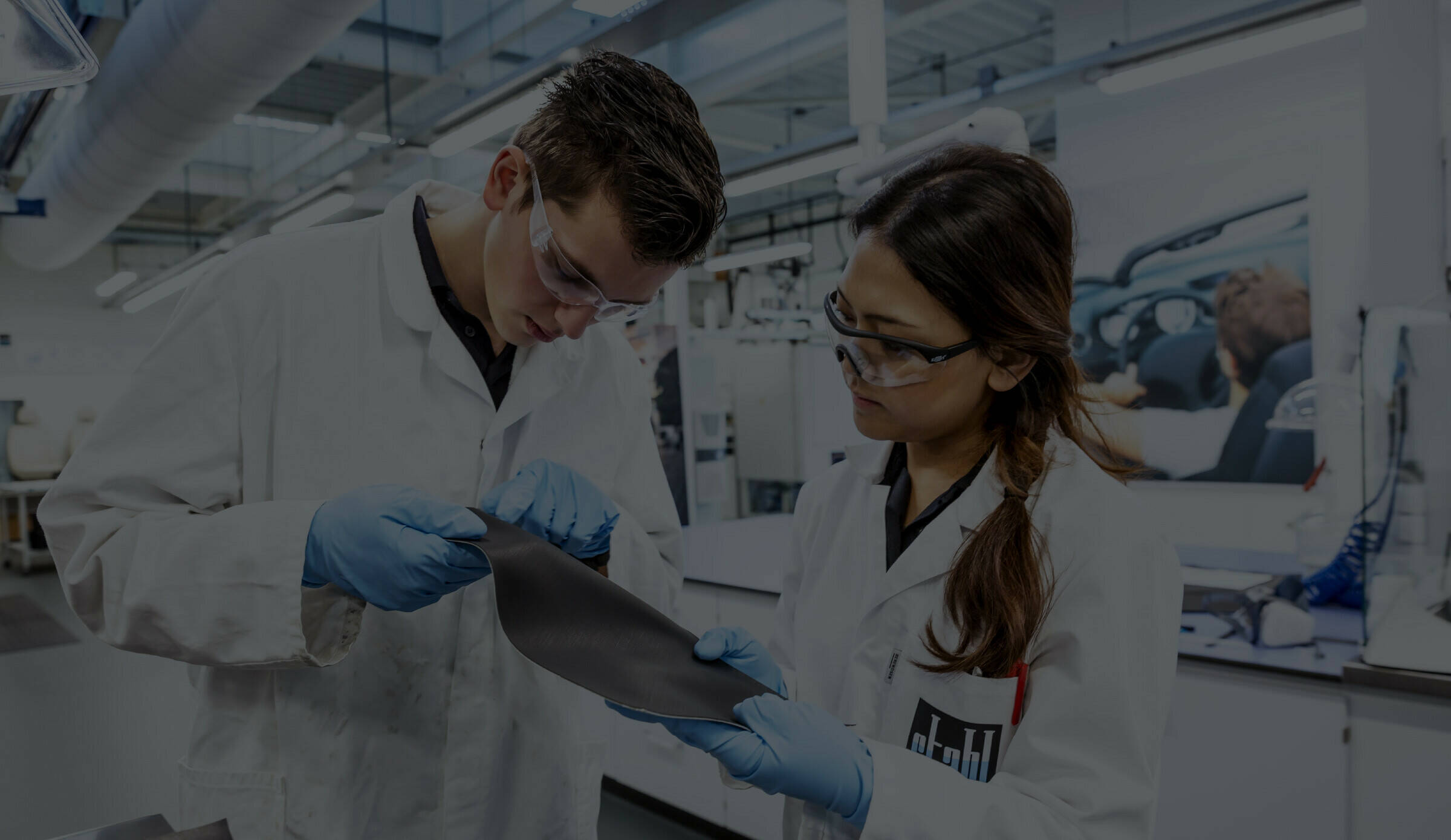
We recognize that gender is not binary, and we are committed to equal treatment of everyone. We have tracked and reported the percentage of employees in our different business units by gender for many years, and this is the information we continue to collect for consistency. However, we are aware that this does not provide the full picture, and we continue to discuss our approach with employees.
We continue to aim for greater equality and higher representation of women across Stahl. As such, we have established targets in the ESG Roadmap.
During the year, we published more content on the theme of diversity in the Easy Learning Space (employee platform for online training) and we added an e-learning module on this topic.
Following the Stahl employee survey, three global focus groups were organized to discuss the need for generation and gender equality, and Stahl’s areas for improvement. Specific projects related to inclusion, for disabled people in particular, were organized in Italy, in cooperation with other companies and the University of Bergamo.
Equality and disability
Our commitment to equal treatment includes people with disabilities. Currently there are 11 disabled employees in Stahl (vs. 13 in 2020). The need to respect strict security and emergency measures can limit the opportunity to employ a high proportion of disabled people in our factories around the world, but this does not mean that it cannot be done.
During 2021, more content was published in the Easy Learning Space on the theme of diversity, and some e-learning training was added to the Stahl training suite. Three global focus groups were also organized after the people experience survey, to discuss the needs for and areas of improvements in terms of generation and gender equality.
Some specific projects related to inclusion for disabled people were organized. For example, in Stahl Italy, we replaced our cleaning service with a company that openly integrates people with disabilities into their staff. At the same time, we initiated a project with the University of Bergamo, presenting students with the challenge of coming up with ideas on how to implement more integration into companies like ours. We expect this to be translated into concrete actions in the future.
A supply chain of positive social impact
Human rights, modern slavery and corruption risk are managed through policy, training and strict governance. All Stahl’s employees are responsible for ensuring these policies are applied throughout the company and the supply chain.
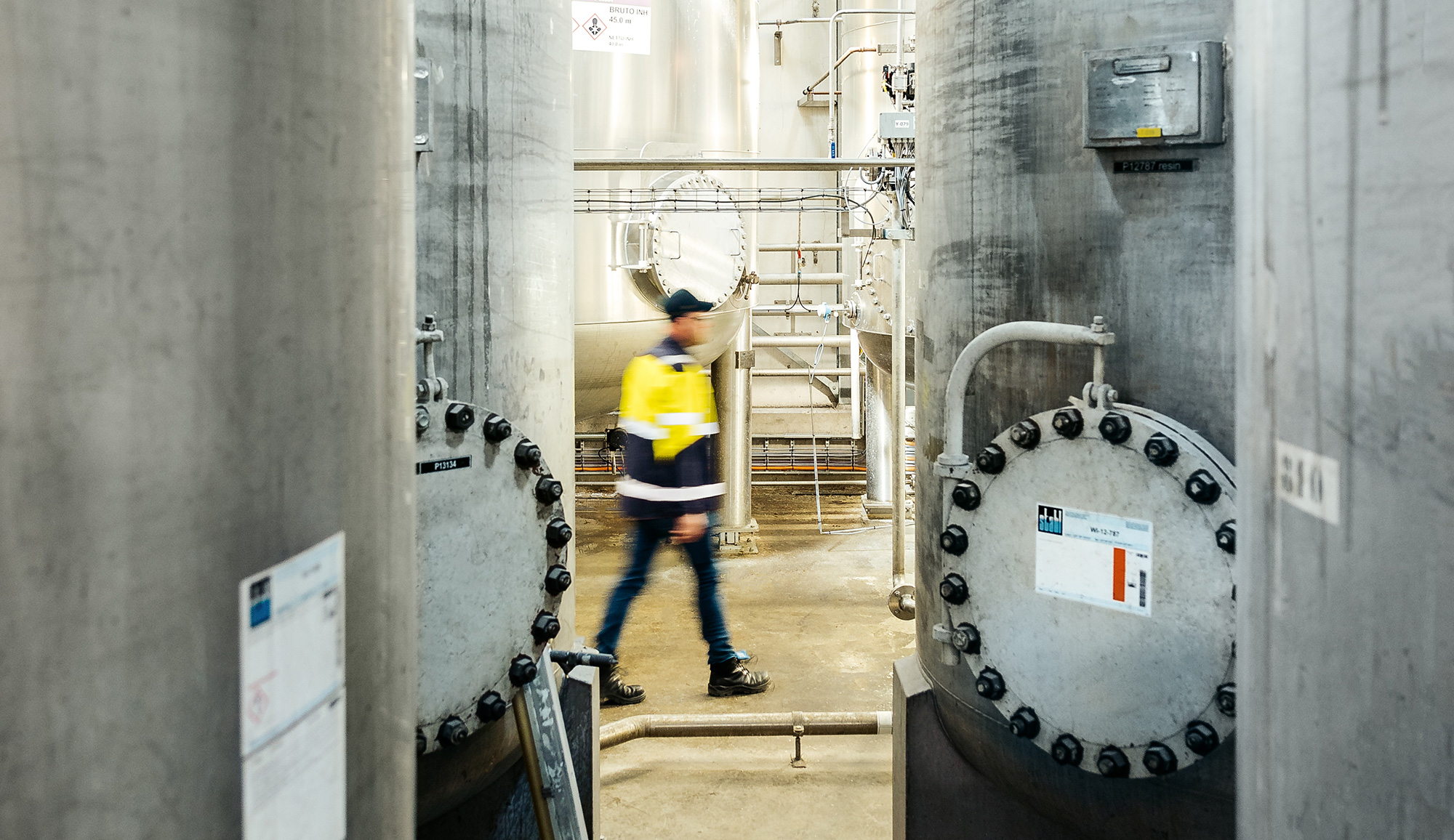
Stahl takes responsibility for monitoring human rights in the supply chain. We do this through a number of mechanisms:
Human rights policy
The Stahl Business Partner Code of Conduct ensures that business partners conduct their activities in a manner that respects human rights, as per The United Nations Guiding Principles on Business and Human Rights.
Whistleblower policy
Updated in 2021, the Stahl whistleblower policy establishes clear rules that encourage employees to report suspicious behavior that could be in conflict with the Code of Conduct, with the necessary protection guarantee for the whistleblower in question.
Training
We run mandatory e-learning training programs for all employees, focused on human rights and prevention of corruption and modern slavery. In this training, special attention is given to awareness and red flags that can indicate non-compliant behavior in the company and the supply chain. Voluntary e-learnings are also provided on diversity, communication across generations and how to lead a generationally mixed team.
Vigilance
Stahl’s Vigilance Team monitors and takes action to mitigate human rights risk under the French Duty of Care Law. Senior management staff are part of the team, including the CFO, COO and the Director of Human Resources.
Auditing
In 2021 the scope of Stahl’s due diligence auditing of suppliers was amplified significantly through the EcoVadis ratings system, which is already used throughout much of the chemical industry supply chain. In 2021, 80% of Stahl’s total spend on raw materials was supplied by EcoVadis rated suppliers.
Accounting
Stahl has specific accounting procedures for anti-corruption for all Stahl locations around the world. This document covers best practices to be adopted for prevention and detection of corruption with regard to finance and payments.
Modern slavery
Stahl condemns modern slavery and child labor and does not participate in the trafficking, recruitment, or receipt of any persons, by means of threat or abuse of power. By behaving ethically and honestly with all its partners, Stahl is committed to ensuring that modern slavery does not occur elsewhere and it strives only to do business with organizations that uphold similar principles. Stahl’s Statement on Modern Slavery can be found on our website.

People will always be at the heart of Stahl. To continue to provide an inclusive, safe and creative working environment for its people, Stahl launched a global employee survey in 2021.
In 2019, the company introduced an Employee Engagement Platform (EEP) to encourage employee participation and foster commitment to the company culture. Online training and the annual performance reviews are tracked on the EEP. In 2021 we launched a successful survey on employee engagement: 92% of employees participated, exceeding the global engagement benchmark of 78%.
The goal of the survey was to understand the level of company engagement of our employees. The (anonymous) questionnaire focused on areas like Confidence in the Future, Employee Experience and Diversity & Inclusiveness Culture. The results gave important insight into our employees’ engagement and their view of the company.
Some examples of feedback and engagement and improvement areas:

Stahl employee survey results
Our engagement index (including pride).
Career Opportunities & Fair Treatment.
Ability of the Management Team to publicly support and promote initiatives related to diversity.
Creation of a diverse working environment to encourage creativity and inclusiveness.
Open and honest feedback to each other.
The final result, a list of local and global actions, was discussed and approved during leadership team meetings in order to set priorities for the coming two years. We plan to launch another employee survey in 2023.
The results were communicated to the leadership team (Management Team) and action is being taken on relevant issues they raised. A global focus group was created after the employee survey to identify improvement actions for the following five areas:

Back
to top

Back to overview

Back
to top
Our engagement index (including pride).
Career Opportunities & Fair Treatment.
Ability of the Management Team to publicly support and promote initiatives related to diversity.
Creation of a diverse working environment to encourage creativity and inclusiveness.
Open and honest feedback to each other.
The final result, a list of local and global actions, was discussed and approved during leadership team meetings in order to set priorities for the coming two years. We plan to launch another employee survey in 2023.
The results were communicated to the leadership team (Management Team) and action is being taken on relevant issues they raised. A global focus group was created after the employee survey to identify improvement actions for the following five areas:
Please swipe for full visual

Stahl employee survey results
In 2019, the company introduced an Employee Engagement Platform (EEP) to encourage employee participation and foster commitment to the company culture. Online training and the annual performance reviews are tracked on the EEP. In 2021 we launched a successful survey on employee engagement: 92% of employees participated, exceeding the global engagement benchmark of 78%.
The goal of the survey was to understand the level of company engagement of our employees. The (anonymous) questionnaire focused on areas like Confidence in the Future, Employee Experience and Diversity & Inclusiveness Culture. The results gave important insight into our employees’ engagement and their view of the company.
Some examples of feedback and engagement and improvement areas:
People will always be at the heart of Stahl. To continue to provide an inclusive, safe and creative working environment for its people, Stahl launched a global employee survey in 2021.

Modern slavery
Stahl condemns modern slavery and child labor and does not participate in the trafficking, recruitment, or receipt of any persons, by means of threat or abuse of power. By behaving ethically and honestly with all its partners, Stahl is committed to ensuring that modern slavery does not occur elsewhere and it strives only to do business with organizations that uphold similar principles. Stahl’s Statement on Modern Slavery can be found on our website.
Accounting
Stahl has specific accounting procedures for anti-corruption for all Stahl locations around the world. This document covers best practices to be adopted for prevention and detection of corruption with regard to finance and payments.
Auditing
In 2021 the scope of Stahl’s due diligence auditing of suppliers was amplified significantly through the EcoVadis ratings system, which is already used throughout much of the chemical industry supply chain. In 2021, 80% of Stahl’s total spend on raw materials was supplied by EcoVadis rated suppliers.
Vigilance
Stahl’s Vigilance Team monitors and takes action to mitigate human rights risk under the French Duty of Care Law. Senior management staff are part of the team, including the CFO, COO and the Director of Human Resources.
Training
We run mandatory e-learning training programs for all employees, focused on human rights and prevention of corruption and modern slavery. In this training, special attention is given to awareness and red flags that can indicate non-compliant behavior in the company and the supply chain. Voluntary e-learnings are also provided on diversity, communication across generations and how to lead a generationally mixed team.
Whistleblower policy
Updated in 2021, the Stahl whistleblower policy establishes clear rules that encourage employees to report suspicious behavior that could be in conflict with the Code of Conduct, with the necessary protection guarantee for the whistleblower in question.
Stahl takes responsibility for monitoring human rights in the supply chain. We do this through a number of mechanisms:
Human rights policy
The Stahl Business Partner Code of Conduct ensures that business partners conduct their activities in a manner that respects human rights, as per The United Nations Guiding Principles on Business and Human Rights.
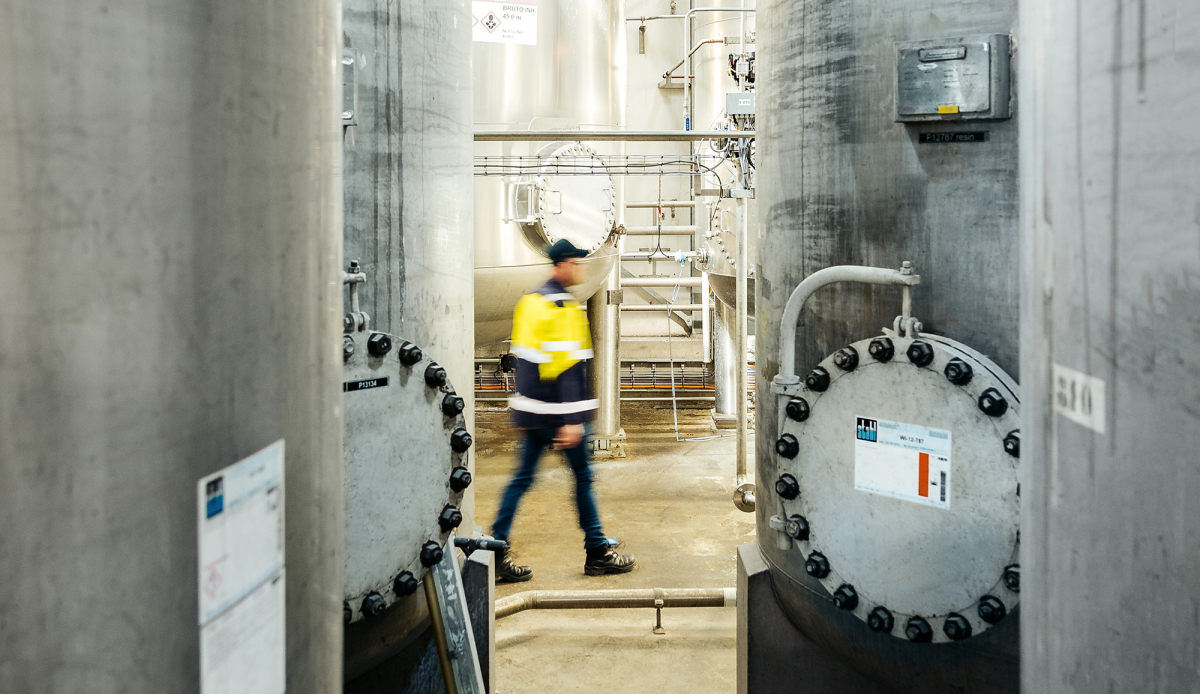
A supply chain of positive social impact
Human rights, modern slavery and corruption risk are managed through policy, training and strict governance. All Stahl’s employees are responsible for ensuring these policies are applied throughout the company and the supply chain.
Equality and disability
Our commitment to equal treatment includes people with disabilities. Currently there are 11 disabled employees in Stahl (vs. 13 in 2020). The need to respect strict security and emergency measures can limit the opportunity to employ a high proportion of disabled people in our factories around the world, but this does not mean that it cannot be done.
During 2021, more content was published in the Easy Learning Space on the theme of diversity, and some e-learning training was added to the Stahl training suite. Three global focus groups were also organized after the people experience survey, to discuss the needs for and areas of improvements in terms of generation and gender equality.
Some specific projects related to inclusion for disabled people were organized. For example, in Stahl Italy, we replaced our cleaning service with a company that openly integrates people with disabilities into their staff. At the same time, we initiated a project with the University of Bergamo, presenting students with the challenge of coming up with ideas on how to implement more integration into companies like ours. We expect this to be translated into concrete actions in the future.
We recognize that gender is not binary, and we are committed to equal treatment of everyone. We have tracked and reported the percentage of employees in our different business units by gender for many years, and this is the information we continue to collect for consistency. However, we are aware that this does not provide the full picture, and we continue to discuss our approach with employees.
We continue to aim for greater equality and higher representation of women across Stahl. As such, we have established targets in the ESG Roadmap.
During the year, we published more content on the theme of diversity in the Easy Learning Space (employee platform for online training) and we added an e-learning module on this topic.
Following the Stahl employee survey, three global focus groups were organized to discuss the need for generation and gender equality, and Stahl’s areas for improvement. Specific projects related to inclusion, for disabled people in particular, were organized in Italy, in cooperation with other companies and the University of Bergamo.
Management positions
Total employee base
Please swipe for full visual

Gender balance
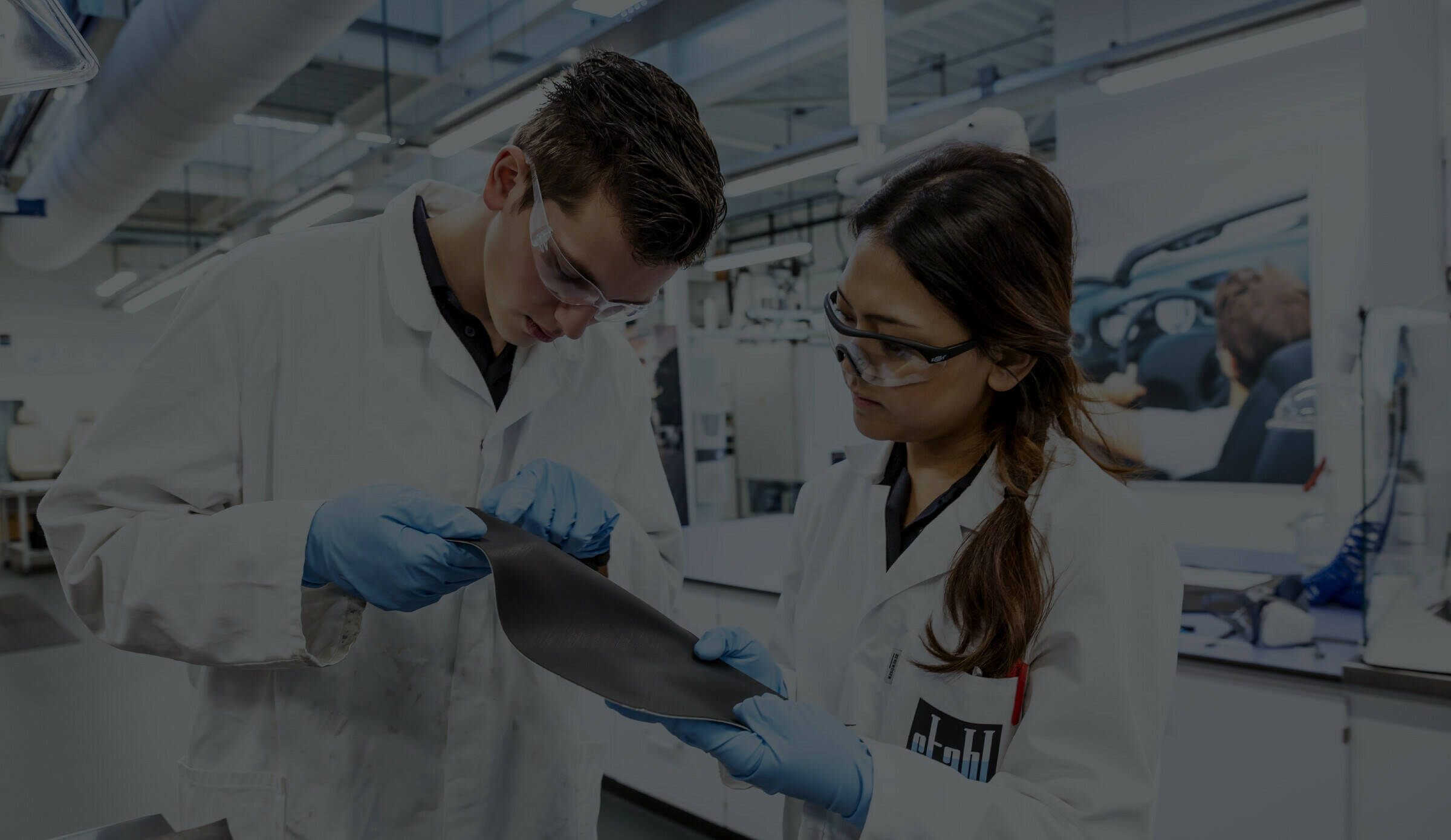
Gender equality
Gender equality is important to us. A good indicator for equal treatment is the percentage of women in supervisory positions, which is 25% in 2021 (the same as the 25% in the total workforce in 2021). Stahl tracks the ratio of female/male employees (25% female and 75% male in 2021, see table below: Headcount) and the number of female employees in supervisory positions (employees with direct reports and/or holding a management position).
Within those overall figures, the ratio differs greatly between departments. For example, there is a significantly higher proportion of men compared to women in production operations (‘supply chain’ in the tables) and in Stahl’s leather chemical sales division. Both of these departments include jobs that have traditionally been less attractive to women. Excluding these departments, 41% of employees are women.
The percentage of women in supervisory positions in 2021 matches that of our total workforce, at 25% (96 women), reflecting gender equality in career progression.


Age of Stahl employees, 2021
Consistent with the strategy of growing our leadership talent, diversity and inclusion principles are embedded within the core leadership development programs to encourage managers to demonstrate them as part of their leadership behavior. We also build cultural intelligence and equality into performance reviews, hiring and talent identification process. The Diversity and Inclusion Policy applies to the whole company, including the leadership team and the Stahl board.
In 2021, Stahl’s CFO Frank Sonnemans communicated the diversity policy. The company’s approach to human rights and vigilance was also covered in the broadcast.
Diversity and inclusion
Stahl’s Diversity and Inclusion Policy expresses the commitment to embedding equality, diversity and inclusion across the organization. Equal treatment is at the heart of the organization, and we believe this will produce a more innovative and responsive workforce.
We also believe that there is much more to diversity than age, gender, race and cultural background. A diverse workplace includes people who can offer a range of viewpoints and ideas. Our employees around the world are of 59 different nationalities (with the greatest diversity in Germany, with 29 nationalities) and of a wide range of ages.
Montse Pous
CoE lab and R&D Projects Manager Performance Coatings
" I think people are the biggest capital in the company. "

Training and education
Stahl is committed to supporting employees in improving their skills through training and education. COVID-19 meant in-person training was put on hold in 2020, however we were able to restart the program in 2021. Employees had access to a rich range of online training throughout the pandemic, thanks to our e-learning catalogue, on compliance, cyber security, diversity, bribery and corruption, and developing soft skills.
Employees also attended several webinars on Stahl’s strategic pillars and the ESG Roadmap to 2030. In total 334 employees attended a webinar on the ESG Roadmap and there was enough time to answer the many questions and suggestions that were shared. We plan to continue this series into 2022.
In 2021, more than 2,000 people from 150 organizations attended Stahl Campus® training courses around the world. This included on-site training courses and on-line webinars.
The Automotive Leather Finishing Post Graduate Certificate course was finalized in 2021 for some of the students and postponed into 2022 for others who could not attend due to travel restrictions. Held in Stahl Campus® Mexico, the six-week course (3 x 2-week modules held over the academic year) developed in collaboration with the University of Northampton (UoN), in which students receive a Post Graduate Certificate from the UoN upon completion. A third Post Graduate Certificate course is planned for October 2022, in Stahl Campus Europe.
The indicator of total hours of training is tracked locally by each Stahl unit and it is consolidated at Group level. The number of training hours received per employee in 2021 was 15.58 hours per full-time equivalent (FTE), compared to 14.71 hours per FTE in 2020.
A training was given to the procurement team on environmental topics such as sourcing renewable carbon and how we calculate all CO2 emissions (direct and indirect). Especially the purchased goods and services category was explained and discussed in detail, including how we can reduce those emissions.
Please swipe for full visual

Data verified and validated by Deloitte
Employee workforce in 2021 at a glance
In 2021 we successfully completed the Annual Performance Review Appraisal within the internal HR platform (Employee Engagement Platform). This is the second year that this formalized approach to annual performance appraisals has been applied to all employees.
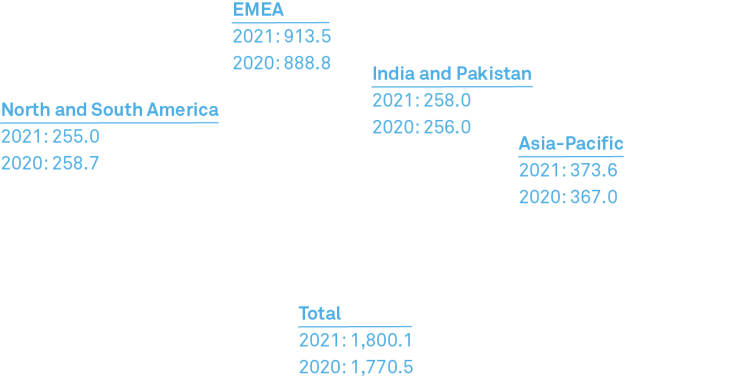
Employees per region
FTEs (full-time equivalent) as of December 31, 2021
Data verified and validated by Deloitte
Valuing our people
As an employer of 1,821 people, Stahl aims to provide a fair and equitable work environment, where people feel valued and supported.
In 2021, 1,821 people were employed in Stahl worldwide – an increase of 31 compared to the end of 2020. The increase is linked to resources required in Operations to address increased demand, and additional R&D staff to establish a permanent team focused on Open innovation.
Customer health and safety
Our commitment to eliminating restricted substances in the value chain (see the section on product safety in the environmental chapter) reflects our broader commitment to customer health and safety.
Our Stahl Campus® training modules are part of this. In 2021, 2,000 participants from 150 different organizations joined us in our interactive Campus trainings and lab sessions. We believe that by sharing knowledge, training industry experts and students, and providing information about what’s possible, we support the shift towards a more transparent supply chain.
In 2021, we continued to make progress on chemical safety in Bangladesh. The project, run by the Tegewa Group of chemical suppliers, of which Stahl is an active member, and the Dutch NGO, Solidaridad, is focused on practical ways to improve the safe handling of chemicals in the leather manufacturing cluster of Savar, in Dhaka, and on the well-being of factory workers in the cluster. An intensive training campaign began on the ground in 2021, for 1200 workers, including 50 managers and 350 peer-trained workers. Several webinars were broadcast to complement increasing awareness. The project officially ends at the end of 2022, but Stahl will continue to support the Savar leather cluster on this critical issue as part of its overall commitment to sustainable development.
Certification
We demonstrate our continuous improvements in safety also through ISO certification. In the ESG Roadmap, we included the target to have all Stahl manufacturing sites ISO 45001 certified. ISO 45001 replaces the previous standard, OHSAS 18001. One of the biggest changes is in leadership and management commitment: it takes a proactive approach that requires hazard risks to be evaluated and remedied before they cause accidents and injuries, while OHSAS 18001 takes a reactive approach that focuses solely on risks and not solutions. We have updated our approach in line with this change, to be more proactive.
Safety is also part of audits carried out by local authorities (as a condition of issuing permits).
Training
We require all employees to be trained in appropriate safety skills, with the understanding that safety is a mindset, not a department, and that everyone at Stahl is responsible for ensuring it. Every site has a training matrix that defines the knowledge required to perform each job. Operators working in production, and colleagues in labs, logistics, centers of excellence and offices are trained based on the type of work they do and the risks involved in their work.
Risk assessment
The Stahl Hazard Identification and Risk Assessment Methodology (SHIRAM) is our standard methodology for safety risk assessment. This methodology was designed to fit Stahl’s operations and processes, and to integrate best practices for risk assessment and management. If our employees observe any additional hazardous conditions or behavior, they are obliged to report this as part of our safety culture. If incidents do occur, all Stahl sites are required to provide an investigation report. The methodologies for this are established at the local site level.
SHIRAM is implemented in a new platform – the ARA Platform – which replaced the previous Stature Platform in 2021. We manage all studies through this platform, so we can easily share information between sites. We will continue and intensify this development in 2022, introducing new templates and services and providing a clear reference within the digitalization landscape of Stahl.
Stahl’s Safety, Health and Environment policy
a strong safety culture involving the whole organization
safety, health and environment as the top priority
safety is more important than a short-term result
implementing best industrial practices in addition to compliance to all legal requirements
knowledge as the basis of all decisions. Stahl will require that employees are trained in the skills necessary to carry out their duties and make decisions ensuring safety
Our Global SHE & Process Safety Manager sets our SHE strategy, standards and policies, implements them throughout the company and ensures we follow them. Through local work councils, our employees are consulted on the SHE policy developments and evaluation.
Our Safety, Health and Environment (SHE) policy focuses on building a strong safety culture across the organization, with an emphasis on implementing industrial best practices as well as complying with all legal requirements.
The key principles of Stahl’s Safety and Health policy:
Improving employee safety through policy and training
We are working to reduce these injury and accident rates towards our goal of zero by 2030, including through policies. Our policies apply to all people working at Stahl, including temporary staff. Our focus on safety extends to our customers and the communities around our factories.
Please swipe for full visual

Data verified and validated by Deloitte
TRI = The total recorded injuries frequency rate is calculated as number of total recorded number of injuries in the last twelve months over total number of worked hours and referenced to a base of 1,000,000 h.
LTI = The lost-time injury frequency rate is the number of accidents involving the loss of one or more days of working time in the last twelve months over total number of worked hours and referenced to a base of 1,000,000 h.
The severity rate is the number of lost working days due to injuries in the last twelve months over total number of worked hours and referenced to a base of 1,000 h.
Monitoring our safety results
Stahl reports safety KPIs internally and to our shareholders on a monthly basis, including injuries, incidents, audits, training, engineering projects and other prevention methods.
In 2021, the rate of accidents and injuries increased, resulting in an increase in the total recorded injuries (TRI) frequency rate, lost-time injury (LTI) frequency rate and severity rate.
Survey feedback
on the areas of strength and improvement
Safety related communication: despite the good teamwork and family feeling, safety is not a common topic when communicating with colleagues.
Safety perception as a fundamental and top priority is not consistent at group level. Safety may be perceived as a responsibility not linked to some job positions.
Improvement
At all sites, people help and support each other creating a “family-like” environment.
At local operational locations, employees are mindful of safety and are encouraged to report any safety issues.
Frontline employees have a good relationship with their supervisors and work very closely together.
At many sites, employees appreciate the effort made by management for safety culture and value the support they get from the company.
STRENGTH
A true safety culture is a mindset that prevails inside and outside the workplace
- A good safety record is never achieved through a large effort by a small group of people, but by many small efforts from a large group of people
- The potential consequences of injuries at work mostly affect people and their social network outside work
- Stahl’s zero-tolerance policy on unsafe behavior ensures people are not injured at work
R20 aims to embed safety into every layer of the business through engagement and awareness. In 2021, we carried out a safety survey among employees - called the Organizational Cultural Diagnostic – for all employees across Stahl’s sites and offices worldwide. The response rate of 97% reflects the importance of this topic to employees.
Our ambition is to create a true safety culture, with a target of zero accidents and incidents. To achieve this, we developed the Road to Zero (R20) program, which focuses on integrating safety into our company culture and ensuring that it is a shared responsibility for the wellbeing of our people.
Pillars of the R20 program:

ESG roadmap to 2030
Goal: Maintain a safe working environment for all Stahl employees and contractors, with a goal of zero accidents.
2030: Zero accidents
Keeping people safe and well
As part of the chemical industry, the occupational health and safety risks Stahl faces include chemical contact or exposure to hazardous substances for health, chronic (serious) illness linked to chemical exposure, slip, trip and fall, and fatal and serious incidents.
Alexis Pey
Global SHE & Process Safety Manager
“ Safety is a top priority for us, and a safety-first culture develops from within. We learned more about what Stahl employees think about safety in our 2021 survey, and we continue to ensure their views help shape our approaches. ”
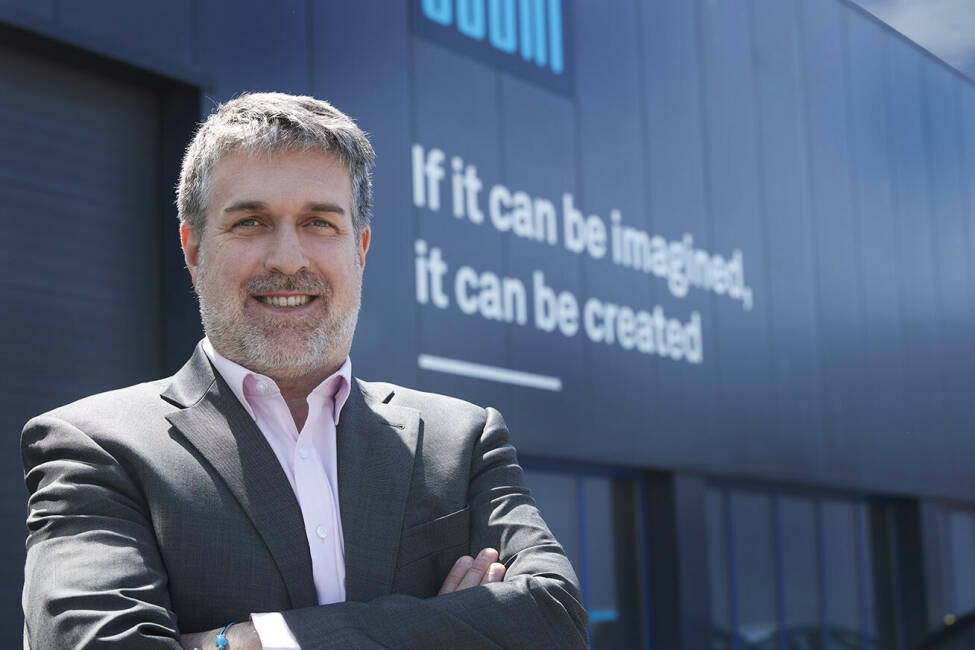
An important part of our commitment to sustainable development is protecting people’s mental and physical wellbeing – within Stahl and in our supply chain. Read this section to find out how we ensure the safety of employees and contractors through training, policy and certification, drive a culture of inclusion and diversity at Stahl, and ensure fair and equitable labor practices in the supply chain.


